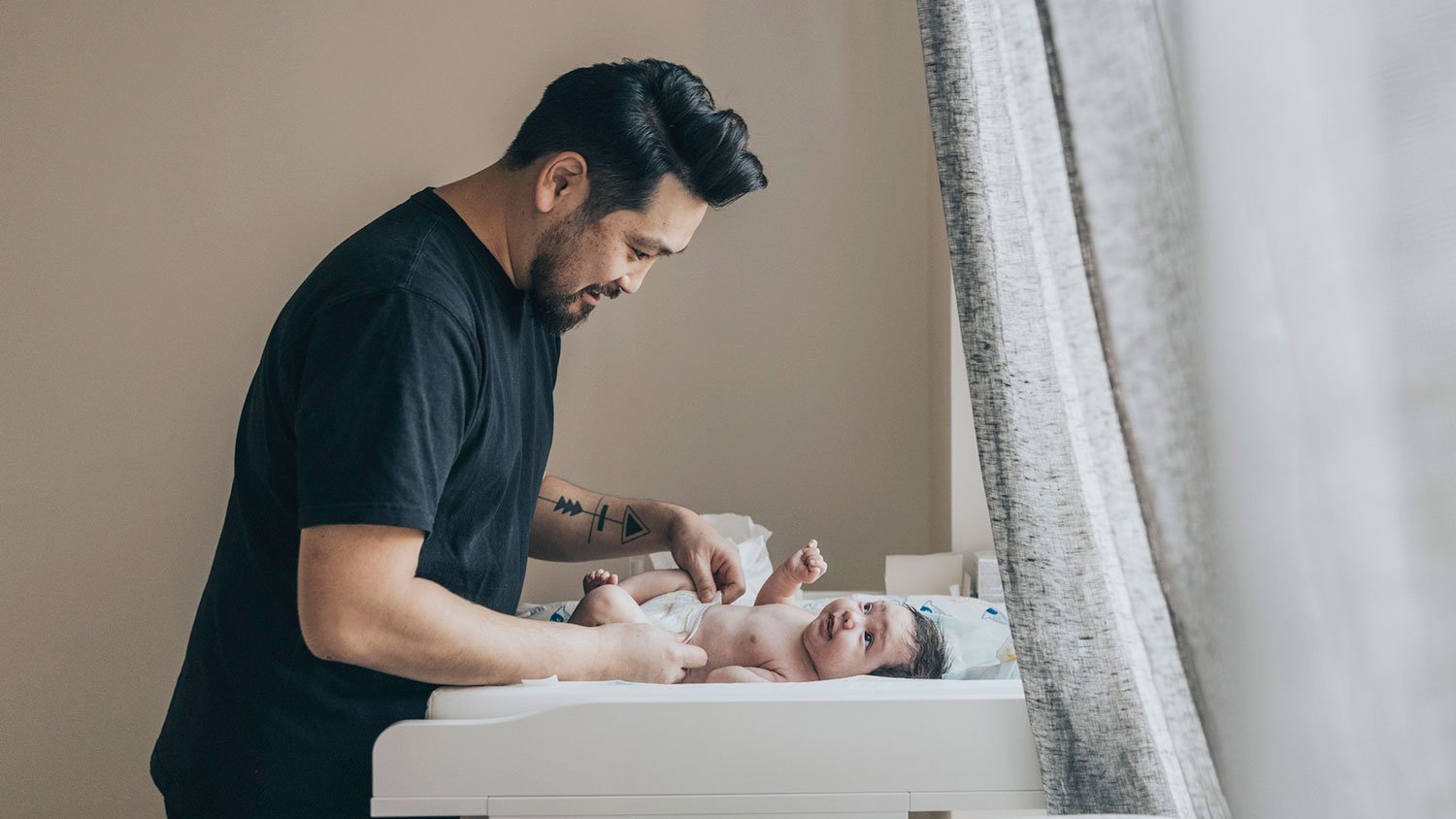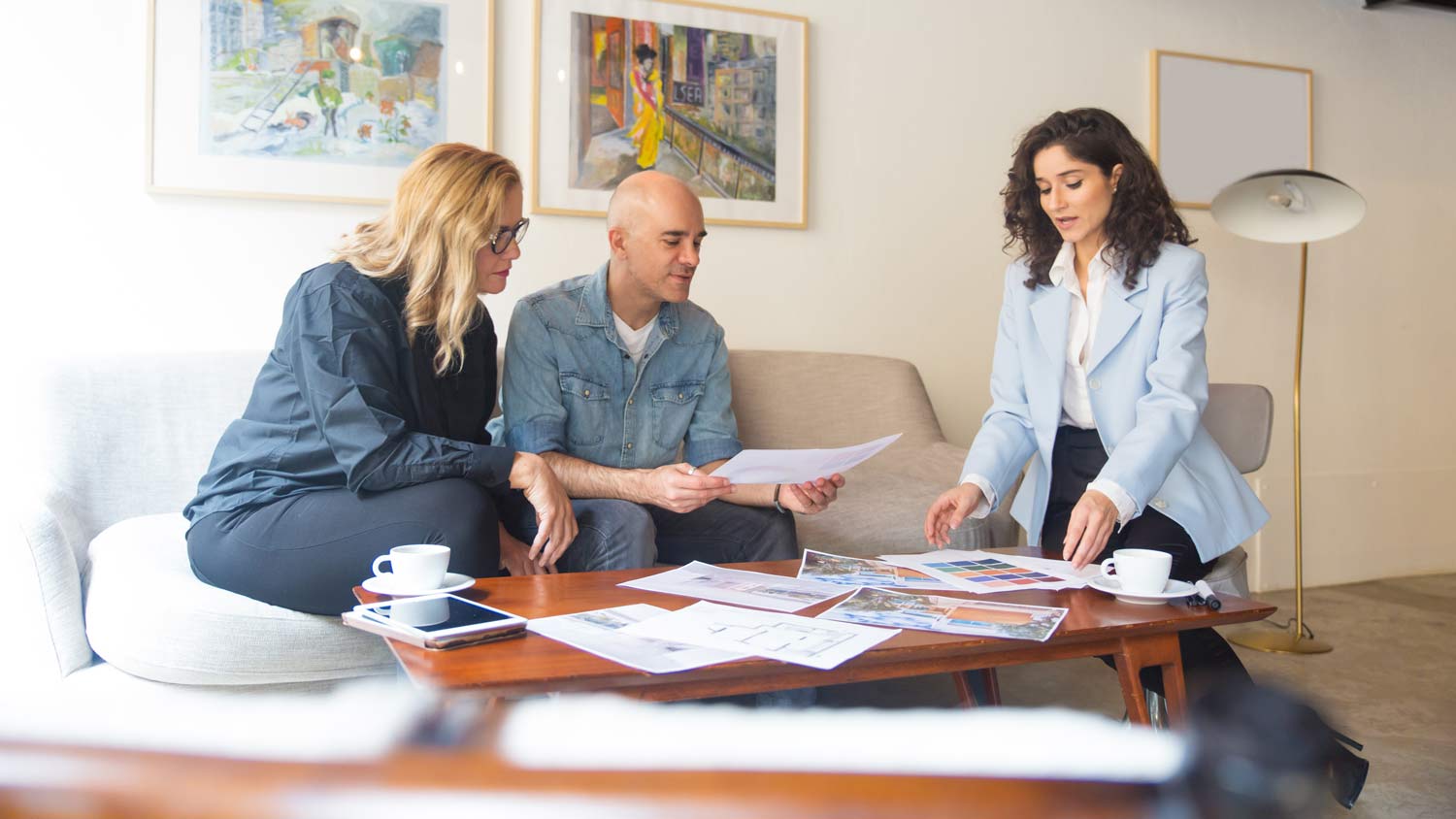How to Design the Perfect Baby Nursery, From Layout Ideas to Common Dimensions
Think inside the comfort zone when planning your little one’s room


A nursery layout should reflect your baby’s day-to-day activities.
Check common baby furniture dimensions to plan your layout.
Always check that recycled furniture is safe to use.
Use safety covers on all electrical outlets.
Bringing your baby home into a nursery you designed is a heartwarming event. But before you can welcome your little one, you’ll need to cover all the basics—from sleeping and changing to cuddling.
Your nursery layout, or how you arrange everything in the room, from furniture to toys, is as important as your choice of baby essentials. Get ready to take those first steps toward the perfect nursery design.
Consider Zones When Planning Your Nursery Design

Think day-to-day (and middle-of-the-night) use when planning your baby’s room. What will be happening in there during a typical 24-hour period? From rocking your baby to sleep to chasing a toddler around with the day’s outfit, you’ll want it to have both function and style.
Next, consider a list of core furniture pieces—a crib, changing table, chair with ottoman or recliner, and dresser. Finally, create zones for different activities, from playtime to feeding.
Sleeping
Your baby’s crib is the single most important piece of furniture in the room. According to the Consumer Product Safety Commission, a standard crib measures 52 to 56 inches long, 28 to 32 inches wide, and 44 to 45 inches tall. It’s a good idea to choose the crib wall first, then work everything else around it when planning your nursery layout.
Follow safe sleeping practices to keep your baby happy and healthy throughout its life, including not putting the crib by a window that has a cord and keeping thick blankets out of the crib.
Keep in mind that the Centers for Disease Control and Prevention (CDC) recommends keeping your baby’s crib in your room until your baby is at least 6 months old for safety precautions.
Changing
It’s not necessary to have a table designed expressly for changing diapers (the surface of a dresser can work just fine), but for safety and comfort, you really want a changing table topper or tray. Most changing tables and trays measure 17 to 18 inches wide and 30 to 31 inches long.
Make sure it can be secured to the dresser and has safety straps and high sides to prevent wriggling babies from rolling off. Parents often like the much-used changing station as close to the crib as possible.
Feeding
Whether nursing or bottle-feeding your little one, a comfortable chair is key. And while grandma’s rocker can work in a pinch, you may want to consider today’s high-tech rocker and glider options: Some have adjustable headrests, power recliner features, and USB chargers to keep those lullabies coming.
Sizes vary, but most rockers and gliders have an approximate footprint of 36-by-36 inches; some upholstered rockers will take up more room. Remember to place the rocker far enough away from the wall so you can rock freely.
Some parents like to sit right next to the crib, while others prefer to sit across from it to peacefully enjoy watching their baby sleep.
Storing
A dresser is critical for storing sheets, blankets, clothes (in a range of sizes), burp cloths, bibs, and diapers, especially if there’s no closet (or a tiny one) in the room. And remember, even if you have a spacious closet, you’ll need a surface for a table lamp, baby monitor, lotions and creams, and toys.
A waist-high single dresser (with a single row of three or four drawers) is typically 30 to 39 inches wide and 19 to 22 inches deep.
Work with a professional closet designer in your area to create the ideal space that will keep things organized and tidy as your baby grows.
Playing
Remember it won’t be long before your baby is ready for tummy time, crawling, and playtime, so if you can, designate a kid-approved play space in your nursery now. Hang shelves on the walls low to the floor so you can perch books within easy reach of your little one.
Lighting and Safety Measures for Your Baby Nursery
With every decision you make as you plan your nursery layout, ask yourself: “Will this keep my baby safe?”
Start with proper lighting for the task at hand, be sure your baby furniture is in good working order, and eliminate the potential for things that go bump in the night.
Provide ample overhead lighting with dimmers and table lamps (plus nightlights), keeping cords out of reach.
Cover all electrical outlets with safety covers.
Use anti-tipping devices to secure dressers and bookshelves to the wall.
Keep cribs (or anything baby can climb on) away from windows
Be careful when using secondhand nursery furniture; always check for recalls or missing parts.
Use an anti-slip pad or double-sided tape to keep area rugs in place.
3 Nursery Layout Ideas

There are a few nursery layout strategies that make sense, no matter the size of your baby’s room. They include all the basics—crib, changing table, dresser, and comfy chair—arranged around the room’s windows and doors in ways that work for you.
1. Classic Nursery Layout

In a classic nursery layout, you can see the crib upon entering, a chair with an ottoman is tucked into the corner next to the crib, and the changing table, on the opposite wall, is nice and wide, with lots of surface room. If you have a compact space, consider sticking with a classic design.
2. Natural Light Nursery Layout

If your soon-to-be nursery has natural light, make it the focal point of the room. Place the crib near the door and put the feeding/reading corner near the window. Add a wide ottoman and chairside table so you can spend hours of quality time.
3. Growing-in-Place Nursery Layout

This spacious nursery is designed to be forward-thinking, so it will still work like a charm when your baby is older. Imagine a smart, multi-use space with two dormered windows and several sitting areas, including a feeding/reading nook.
There should also be room for a day bed/trundle, which can serve you well now when you want to take quick naps in the baby’s room, and when your little one starts having friends over.
Additional Baby Nursery Tips
A nursery layout is just the beginning. There are dozens of décor decisions to make, depending on the mood or vibe you want to create—from color palette to bedding for your baby’s crib.
Whether your taste runs from classic to contemporary, here’s some good advice:
Decor: Don’t go overboard with a theme; you and/or your child will probably want to refresh it in the future.
Color palette: Keep it sweet but gender-neutral, especially if you’re planning to have more children.
Ceiling: Add affordable style and charm by covering the ceiling with a gorgeous wallpaper you love, a mural of clouds, or a pop of color.
Windows: Opt for black-out curtains to keep the room dark—and your little one soundly asleep—no matter the time of day or night.
Flooring: Wall-to-wall carpeting is a good investment, as well as plush rugs for your baby to crawl around on.
Personal touch: Add a family heirloom, like your mom’s baby blanket or your grandpa’s favorite book, to add personal family history to your nursery.
A nursery should be as unique as your baby. Whether you’re planning a DIY project or want to hire an interior designer in your area, it’s always a good idea to have a layout sketch at hand. As you design your nursery, check the latest safety guidelines for sleep, crib, and other baby furniture items to create a peaceful space that allows your baby to thrive.





- 25 Sweet Nursery Ideas for Baby and Parents
- 9 Parent-Approved Tips for Organizing Your Nursery Closet
- Babyproofing Your Home: Protect Your Little One With These 9 Tips
- 7 Best Nursery Paint Colors
- 10 Tips to Make Moving With a Baby a Breeze
- What to Know About Bathroom Layouts, From Design Ideas to Common Dimensions
- 19 Living Room Layout Ideas You’ll Love [+ Sample Floor Plans]
- Home Staging Checklist: 35 Tips to Sell Your Home Quickly
- 26 Fun Kids' Room Ideas (That Grown-Ups Will Love Too)
- 13 Extra Room Ideas to Help You Take Up Space










